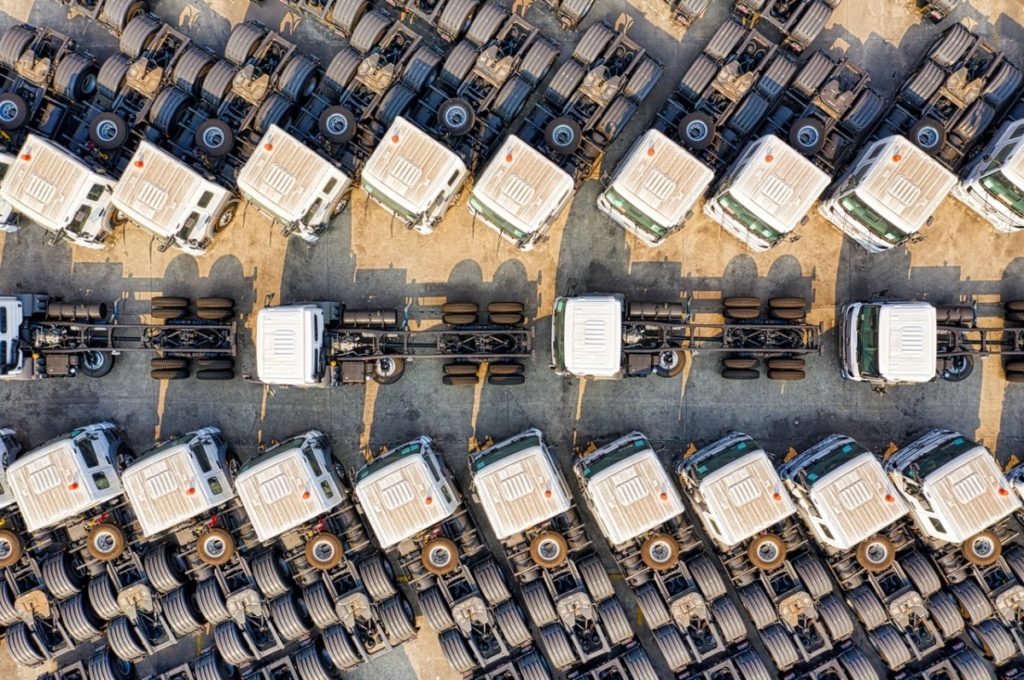The trucking industry of the United States serves its economy mainly by transporting huge amounts of finished goods, raw materials, and works that are in process. Generally speaking, trucking means using the road to transfer commodities from the manufacturing plants to individual distributors and retailers. In 2019 alone, the trucking industry generated total revenue of 791.7 billion US dollars and employed more than 947,000 truck drivers along the way.
The History of the United States’ Trucking Industry
The beginning of trucking services in the US dates back to the 20th century when the main mode of transport is horse-drawn carriages and steam trains. Trucks were introduced to this industry only during World War 1 due to the increased need to transport construction materials needed to pave roads and create infrastructure. In 1956, taxpayers in the US agreed to provide funds that will help build the famous Interstate Highway, an extensive and large network of freeways and highways that connect all the major cities in the country.
The Trucking and Technology
The trucking industry is moving side by side with the fast-paced development of today’s technology. Like many industries and services, the trucking business also utilized technology to track their delivery operations and bookkeeping or accounting for truck drivers. Companies are now employing IT professionals that will help them develop software that can secure the efficiency of their operations.
Tracking orders are now made easy by having a smooth-running software that provides real-time location and status of the drives. The trucks nowadays are also equipped with state-of-the-art smart technology that improves the overall functionality of the vehicles.
Full Truckload Carriers
You can offer many trucking services, but you can first focus on full truckload carriers or FTL. Generally speaking, FTL carriers are trucks that haul huge amounts of homogeneous cargo that can fill an entire container or semi-trailer. There are many FTL contractors, but most of the time, huge companies provide their own FTL services that will transport their products.
A full truckload truck is fully capable of hauling large products and raw materials. The average size of a full-freight trailer used in FTL is 8 to 8.5 feet wide, 12.5 to 13.5 feet high, and 40 to 53 feet long. Since they are only servicing one client at a time, it is also easier for FTL carriers to provide a more accurate and real-time cargo location.
The leading FTL carriers in the United States are Old Dominion, J.B. Hunt, and Knight-Swift, whereas the latter reported total revenue of USD 9.1 billion in just 2019 alone.

Partial Truckload
Partial Truckload or LTL refers to trucking services carrying cargo more than 100 pounds but is not enough to fill the whole container. This type of trucking service allows the operator to accommodate several clients at the same time and deliver products simultaneously to optimize a single operation.
A typical LTL shipment normally weights between 200 and 10,000 pounds, while the size of the trailer itself is around 42 feet by 48 feet.
In 2019, the leading LTL carrier in the US was FedEx Freight that generated a revenue of USD 7.4 billion. It is followed by other trucking giants such as YRC Freight, XPO Logistics, and Old Dominion.
Reefer or Refrigerated Trucks
Temperature-controlled trucks are the third type of service this industry offers. Trucking services under this classification usually handle the shipment of fresh produce, cheeses, poultry, meat, pharmaceuticals, and medical or chemical materials. These vehicles are often marked on the outside as “Do Not Delay.”
Trucks used to handle sensitive items like perishables and medicines normally have an electrical panel that can control humidity and temperature. Most of the time, they also have a backup system or built-in generator that will kick in unless the main cooling system malfunctions.
Couriers
The last classification of a trucking service is a courier. This sector is responsible for moving light goods and non-palletized items such as parcels. The main role of a courier is to transport small items from point A to point B. Couriers normally handle different products from various clients at the same time.
Three major companies dominate the United States couriers services. They are UPS, FedEx, and the US Postal Service. The revenues from this sector are higher than the income of FTLs and LTLS. In the 2020 fiscal year report, FedEx Express reported total revenue of USD 27.6 billion while UPS reported an income of USD 46.5 billion.
These are just the basic yet most vital details that make up the foundation of a trucking business. You still need to learn more about the required legal documents and vehicle types used in this industry. Knowledge is power, and by reading this guide, you are already a few steps closer to your future trucking business.

